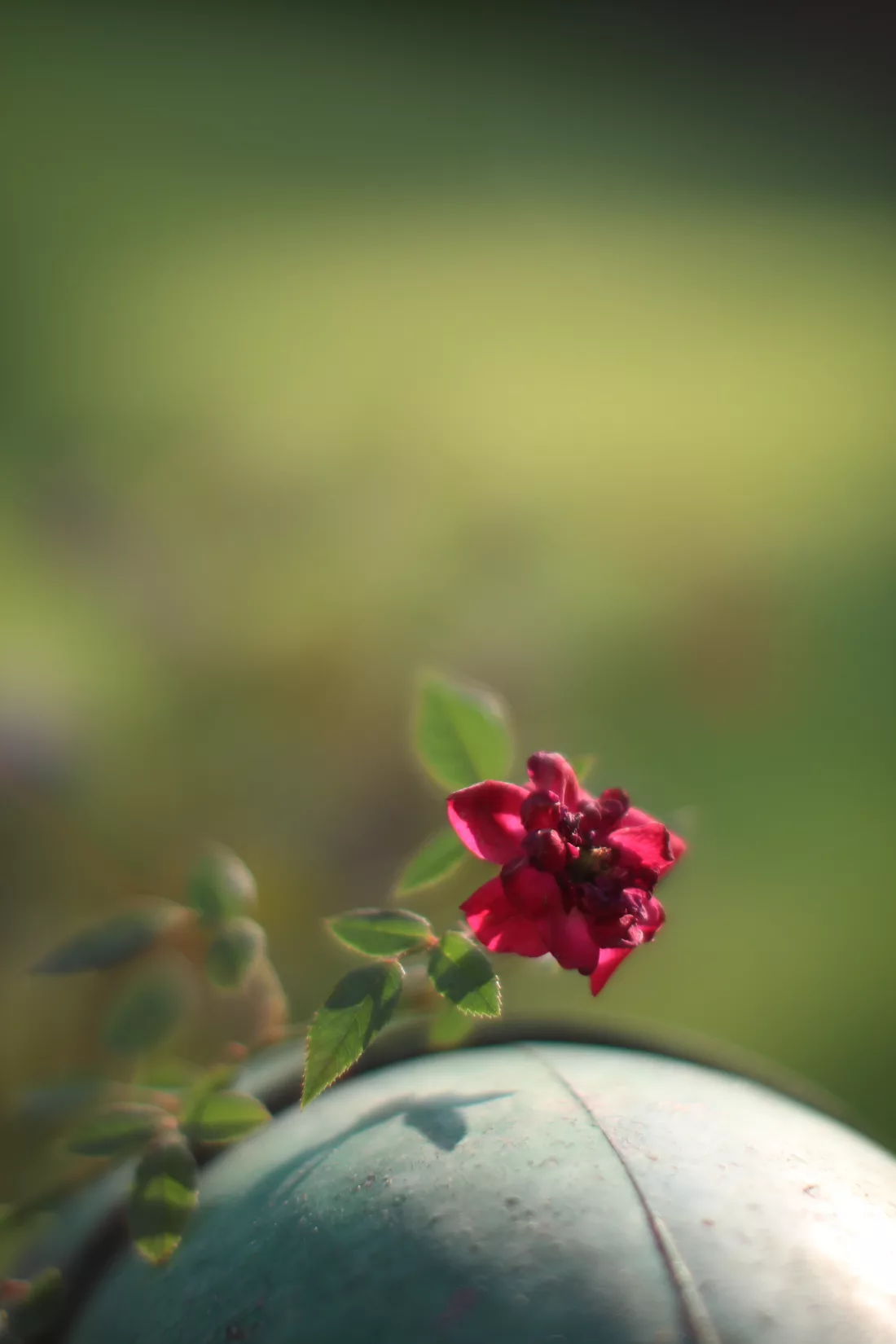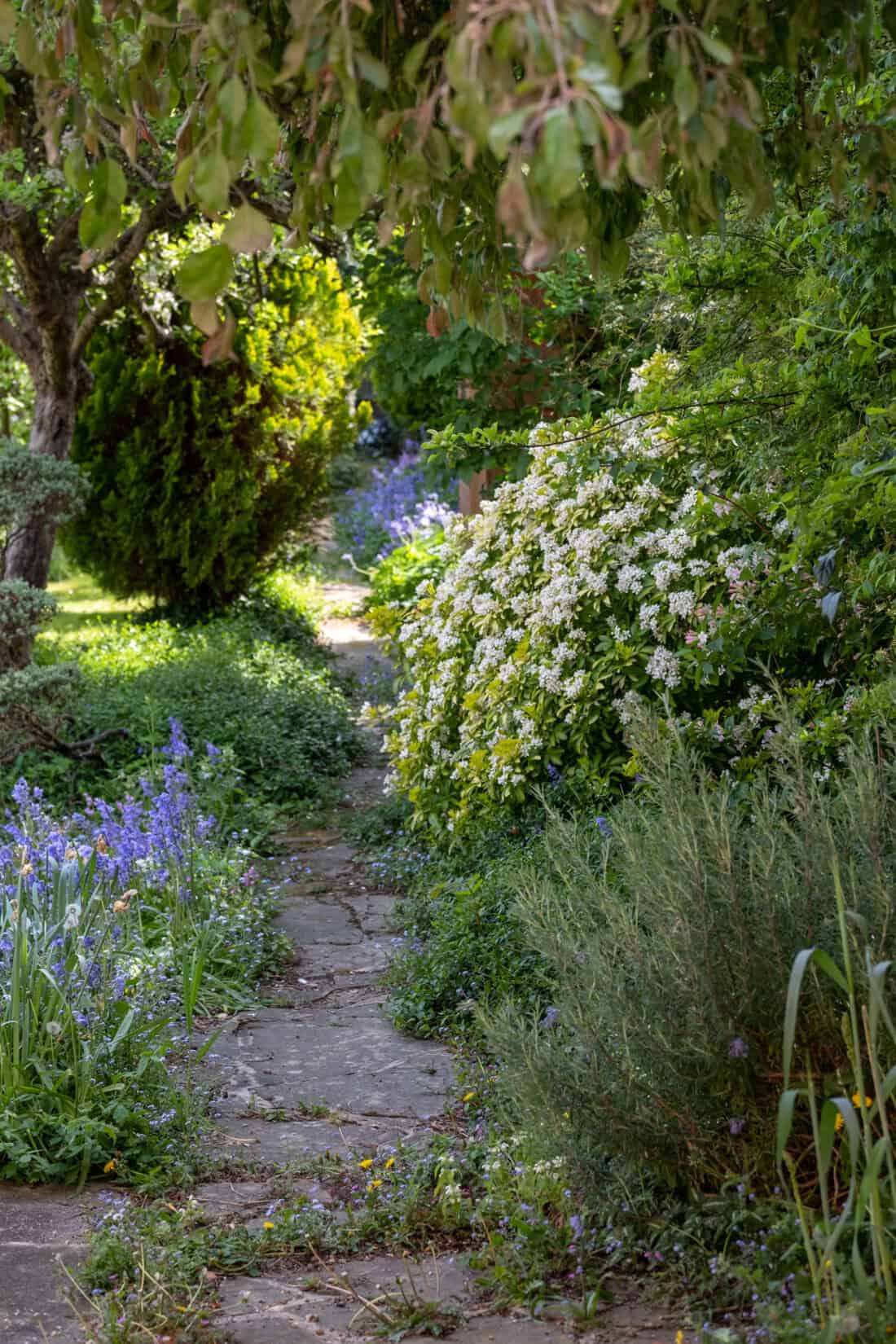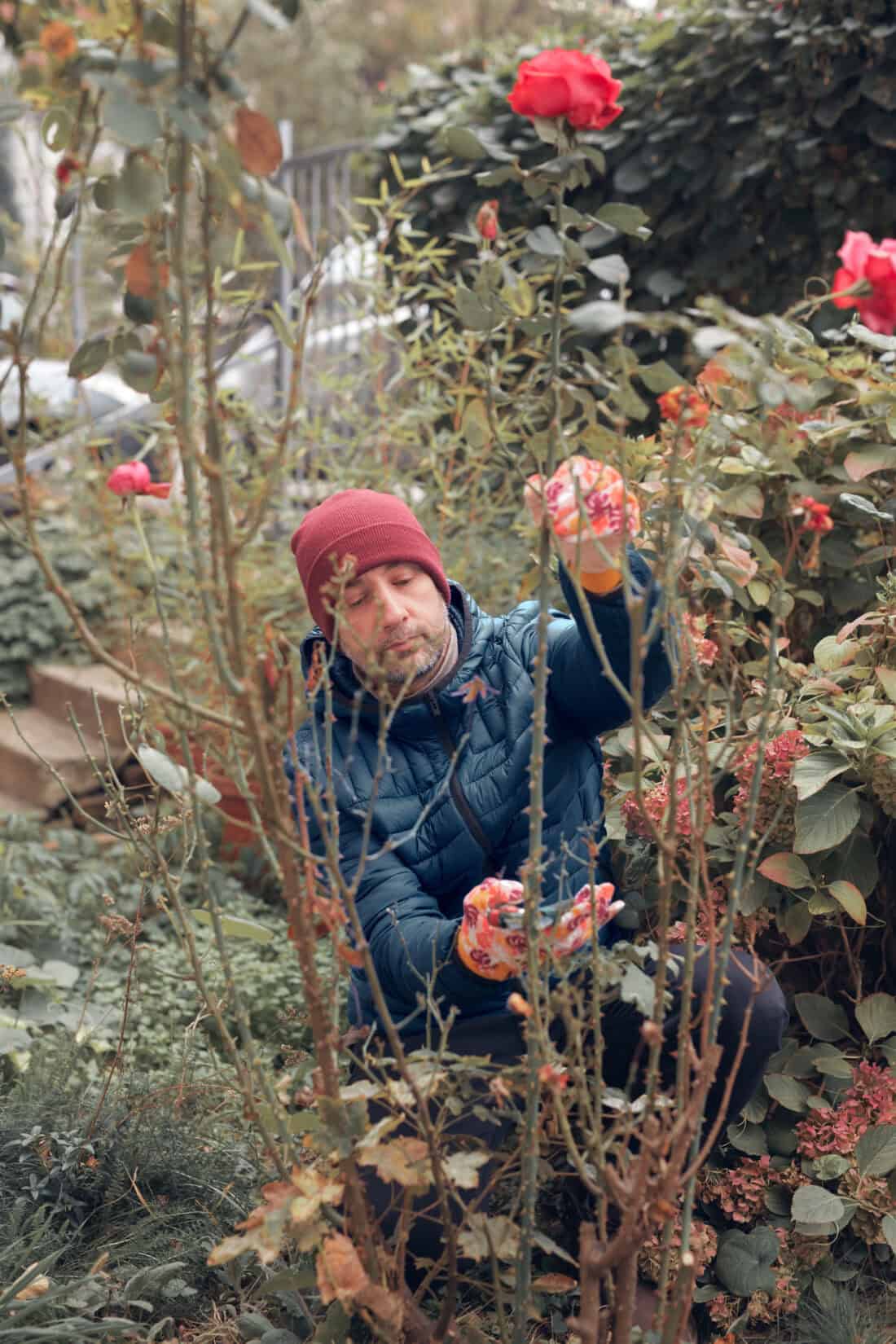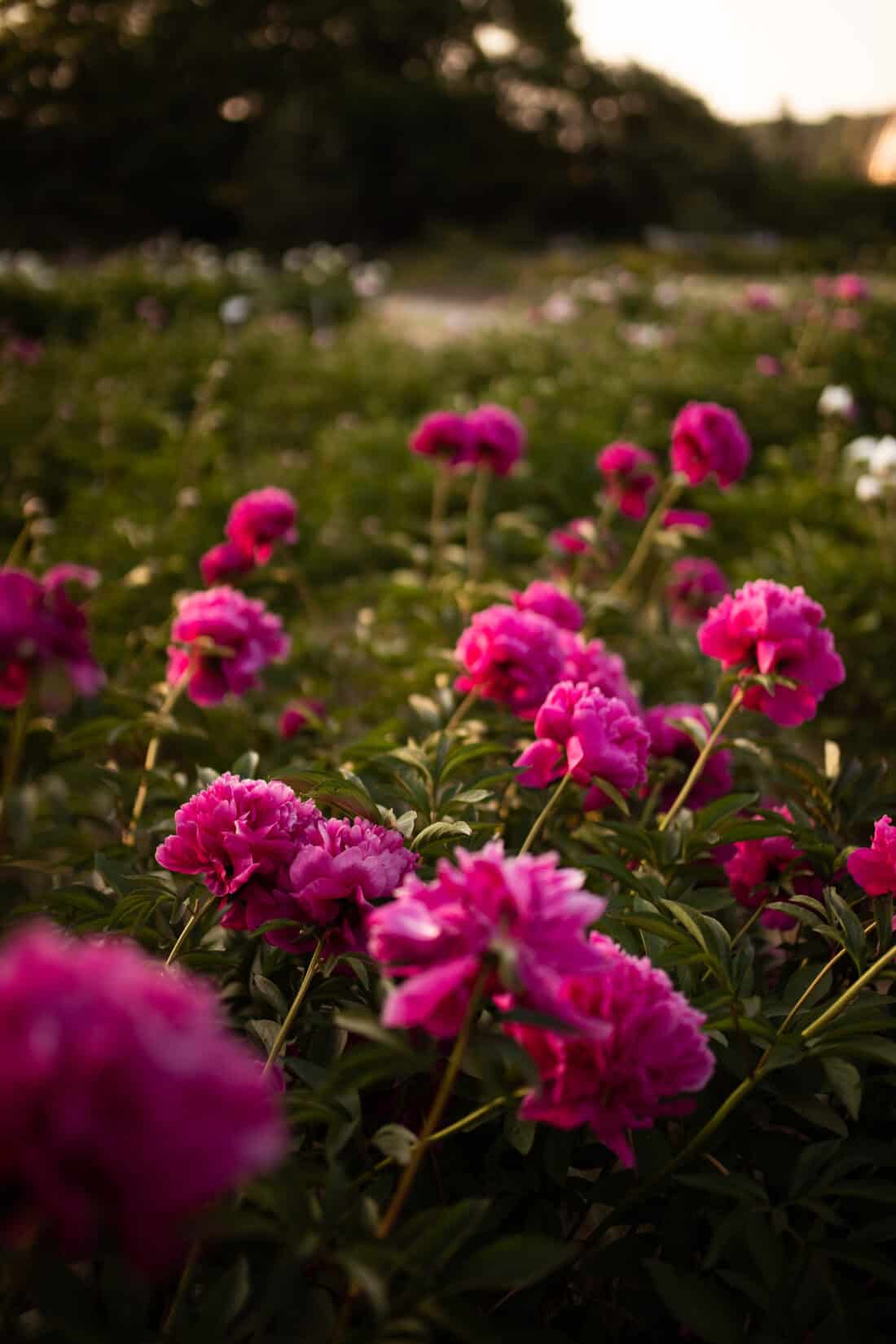You should probably unsubscribe right now it your garden isn’t a bit overgrown or a mess. At least sometimes, or seasonally, or because you are “working on it”…
We are all a hot mess. If you genuinely aren’t – this isn’t for you. (and also, can we even be friends?)
Seriously.
The pretense of garden perfection is just as annoying and detrimental as face filters – one just makes you have a dysmorphic relationship with your own face and the other leads you to accelerate global warming by installing a -“quick fix” lawn.
Which is is worse? I don’t even know. 🤷♀️
The fact is gardens change constantly – they are not static. A short vacation or a little bit of distraction means that your garden will not get the attention to avoid becoming “messy” or overgrown.

Lauren wrote to me:
“I have a pre-existing large yard with several garden beds that were here when we purchased our house 2 years ago, the yard and gardens are overgrown, messy and in disrepair— the flower beds are mostly weeds (there is A LOT of weed pressure), some of the hardscaping was once nice (dry stack stone walls), other areas not as nice but most of it is starting to fall apart and it has become too overwhelming and expensive to try to get everything in shape and looking good. My husband and I are at the point where we are contemplating ripping everything up and planting grass just so things look neat and tidy and less of a mess until we have the time and money to actually do it right and make it the dream garden.
Additionally, because it was once a lovely place the living areas in the house are situated towards that view as well as the main door we use. So it’s hard to put it out of site out of mind, it causes a lot of mental frustration on a daily basis. Do you have any advice on how move forward with a falling apart garden that we can’t tackle yet and prevent it from getting worse?”

Here are my thoughts:
40 QUICK FIXES FOR AN OVERGROWN OR MESSY GARDEN AND A GARDEN IN LIMBO
First, a few mindset calibrations:
1) Completely ripping out everything and just planting grass is moving in the opposite direction of the goal. It will destroy so much of what is there and actually working. Despite what you think you see – many things are actually pretty great. (I can say this with 100% confidence – even though I haven’t seen a picture of this garden). You just need to change your viewpoint and filter to find them.
2) Weeds are only weeds because we say they are – I know this can feel flippant – but the plants that are there are there because they work so well that other stuff can’t get a word in edgewise. They are, in fact, very well suited to your situation. They make your garden look overgrown because they are happy and thriving.
3) WE are all creatures of habit – (“WE” includes your garden and all living things). Your garden has a habit of growing lots of unwanted ‘weeds’ and falling apart, just like I have a habit of eating too much ice cream.
“There’s just one way to radically change your behavior: radically change your environment.”
—Dr. B.J. Fogg, Director of Stanford Persuasive Lab
4) In physics, horror vacui, or plenism, is commonly stated as “nature abhors a vacuum”. Aristotle was the first to come up with the idea, and despite a whole bunch of nerds arguing about it over countless centuries – it holds up.
Gardens abhor a vacuum – and will fill empty space unless you fill it first. Keep this in mind as you start to improve and make changes – it will help you to be less frustrated.

Dear Lauren,
- Mow the weeds. This will likely stop or vastly slow their spread (by preventing them from seeding and by weakening them from spreading underground if they spread by root). Mown weeds don’t look so bad. They can even look lawn-y. Don’t do it just once, but regularly. In a matter of minutes – your overgrown garden will transform into something to something less messy.
- String trim the weeds. The more lines you create on the landscape, the more it will appear in control in that classical way we think of and tend to aspire to. Lawnmowers make fat lines, and string trimmers give you a little more control and create details that add refinement.
- Approach the project in a very specific way – start closest to your house first, then work your way out. What you see daily, first – what you don’t see, last. This will help reign in your overwhelm. This will help you get started with taming and see progress, which will help you to gain momentum for more progress.
- Stop worrying about what the neighbors think. Groupthink* takes hold of neighborhoods just like does high school students and leaders at the highest levels of our governments — and it messes people up. (Mean Girls, Lord of the Flies, The Challenger Disaster, The Bay of Pigs Invasion…).
- Obvious progress buys time and patience. (both with you and your neighbors). Take it one thing at a time – but keep going. In the landscape industry, we call it ‘cues to care’. Cues to care is a fancy way of saying that if you have a messy garden and you take actions to make it look purposeful and that you either making progress or are maintaining in some way, not only will your garden have the perception of being less overgrown but also it will communicate that you are making an effort and lots of times that is all fussy neighbors need to see to understand that you aren’t just being negligent.
- Make a plan. That is why you joined my course** – finish the task. Even if it is a plan you end up modifying – having one will give you a road map to start. Right now you feel lost – and hopeless – a map will help to guide you out of it.
- Take pictures. Transforming an overgrown lot into a beautiful garden is a long game – but what you are looking at is the absolute worst – every little improvement you make will make the picture better. Looking back over these pictures will help you stay motivated.
- Don’t rip out anything too fast. Do all the steps above first and see how you feel. Dry stone walls that are tumbling down can be beautiful. There are even companies that specialize in building them. Things that look a mess are often just in need of a re-frame.***
- Repair, don’t replace (as much as possible). I’m not saying that replacing is bad and it is often what is needed – it is just that we tend to do it too quickly and thoughtlessly.
- Fix real problems first – like drainage. Or safety issues.
- Rip out anything that is dead. You will feel much better. Dead plants or plants that are struggling convey a message of not caring – removing them will freshen things up even if you don’t replace them right away. You should, however, note what I previously said about nature abhorring a vacuum – if you remove and don’t replace it – nature will, and it will likely be some opportunistic plant that you may not want. To prevent it from looking more overgrown in the near future – either fill the holes or plan to maintain the exposed areas.
- Consolidate. Do you have rocks that migrated? Move them into a pile. Put like with like. Are there other materials that have been strewn about? If they are out of place – put them in a pile together. Organization – however temporary, will feel better. This can work with plants too.
- It’s like cleaning up a kid’s playroom. Put the legos all in a box. Then, gather all the doll clothes and put them in a place. Once you start to be able to see the floor again – you can start to see how it might be nice with a tree planted in the middle.
- Prune. Dead branches and trees with low limbs create visual clutter. A good pruning – just of dead branches and low branches (perhaps those blocking windows or too low to walk or mow under) will reduce the overgrown garden look.

- Be patient. And confident (I know you can totally create something amazing!). But nothing happens overnight.
- Consider temporary solutions – like container gardens.
- Give it some ambiance – a string of overhead lights can literally turn a nasty alley into a charming alcove. They can also turn your mown weeds and crumbing stone walls from an overgrown, messy garden into a romantic, naturalistic meadow.
- Do you have nice patio furniture? Drawing yourself out into the garden you already have will help you understand how you want to use what you’ve got – and how you will want to evolve it. You have to be in it to understand it. Plus, there is excitement in contrast – new, clean furniture in a rustic space makes everything a little more lively.
- If you have to get something green growing (that is lawn-like), consider a cover crop like clover instead. This will build your soil, and it is much easier to work with when it comes time to make it into something else. Also consider seeding wildflowers – also better and prettier than a lawn.
- Gravel is a cheap way to get started with hardscaping. Paving materials can be pricey and they aren’t something you want to invest in until you know what you want. But all hardscaping requires a gravel base layer. You can get started for a lot less by creating paths and patios that might become more permanent by creating them just with gravel. The expensive stuff can be an added upgrade later – but in the interim, you have functional spaces and walkways.
- Do this test – close your eyes (take a deep, calming breath while you are at it) and clear your head for just a minute. Make sure your body is pointed at the garden (preferably in one of the main spots you view the garden – like the approach to the driveway or out the main windows). When you open your eyes – be very conscious of your eye’s path. What do you see first, second, third… etc? If you lose track – just reset by closing your eyes again. Your husband should do the same – write the list down and compare. Is the first thing you notice something good or bad? The bad things that are at the top of the list should be the first things you deal with – the good things should be protected at all costs. Repeat this as you progress.
- Get started. Starting helps. Momentum is easier to sustain. Do something – Anything!
- Go slow – take the pressure of “instant” off your mind and out of your lexicon. Defend your right to take it at your own pace like you would defend your child from a bully. Instant isn’t reality and it is totally unrealistic.
- Mulch helps. Mulch makes messy look tidy and helps maintain the overgrown (at least for a little while – it cannot, however keep garden weeds at bay forever)
- Take inventory of the materials you already have. How many different types of things are there? If the number is more than 3, consider which three are the best and closest to the palette of things you’d like to eventually have and consider getting rid of the rest. Sell them – there is a reasonable market for recycled and up-cycled garden materials – and you can use the funds to create something new.
- Also – recognize that if you have lots of materials – the ones that look best – no matter what – are the natural ones – stone, wood, etc. (This is another thing I can be 100% sure of without even looking). ****
- A fresh coat of paint works just as well outside as it does inside.
- Close gates. Enclose spaces. Think of it like shutting the door to that bedroom or closet. You know the one…Out of sight, out of mind. But also it is a barrier – it will help you make smaller less overwhelming areas that you can work on piece by piece.
- Distraction is your friend. Consider planting something great right in your line of sight that is impossible to look away from.
- Use what you have to test out ideas. Mow a circle in the weeds, mow paths in weeds. Hoses to draw adjustable lines. I’ve used my discarded Christmas tree, held upright by a mound of snow, to visualize if I like the location of a tree. See if you like the placement and if you want to make it more permanent.
- Add a focal point. Think of a meadow – it might look like nothing but wild openness. But put a beautiful piece of sculpture in the middle of it and suddenly it takes on the role of a frame and it is instantly more meaningful. Large colorful vase shaped pots are great for this – you can always make them into a fountain or use them to strategically pull together a planting scheme later.
- Identify invasives and get rid of them.
- Make a proactive design decision – is there something you really like that you want to add? Maybe it is terracotta – start collecting pots and elements that you will use in time (or it could be another material like corten steel or corrugated metal). Or maybe it is a certain tree or type of plant. These elements can slowly start to make their way into your design – shopping for the collections that will inhabit your patch is fun and will keep you motivated.

- With your partner or housemates – Make list of sentimental plants. These are things you know and love because it was at a grandma’s house or holds some special memory. Once you have a couple things you know for certain are plants you want – research them. Figure out if and where they will work in your garden – is there a place that meets all their needs? Focus on the trees and shrubs first and see if there is something you can start with.
- Establish a compost pile. It can be in the back corner. And it can literally just be a pile… it will give you a place to consolidate prunings and debris – and it will work its way into new soil while you figure out what you are doing.
- Don’t drive over areas of the garden – when things are in flux, we have a tendency to think we can just move in with heavy equipment. Do this thoughtfully – compaction is a real issue that will make your soil much less habitable for future plants (a lawn or anything else). Be very careful and thoughtful about compacting soil while you are making changes.
- Go lightly and thoughtfully – you can always remove more – but you can’t put it back – especially things like trees and established plants.
- Prune more – A first prune will feel great. Dead stuff will be gone, light will improve, and you will have a feeling of freshness. But don’t be afraid to do it again – usually it takes a few cycles of pruning an untended tree or shrub before it really starts to come back to its best self.
- Start an inventory – get out in the garden – use a plant ID app – and understand what good things there are.
- And as always – remember, you and your land are not an island. It is impossible for you to act in isolation. Everything you do impacts your neighbors and everything around you. So, don’t be a nitwit.
All this is to say – once you have started to change the environment – you will start to change the garden’s behavior as well as yours. (Like maybe by not having Ben and Jerry’s in the freezer – it will stop calling to you every time you sit down to watch White Lotus. After a while, the cravings will start to subside a bit). Things will get easier with time – in many subtle and profound ways. By working with nature and going at her pace, you will start to tune into each other, and garden-making will get easier. You will only have to go back to look at the before pictures to remind yourself how far you have come.
xo

*Definition: Groupthink, /ˈɡro͞opˌTHiNGk/: a phenomenon that occurs when a group of individuals reaches a consensus without critical reasoning or evaluation of the consequences or alternatives.
STRAIGHT TRUTH – “A lawn is a great solution to ‘quick-fix’ my yard” is a pernicious example of groupthink.
**Lauren is one of my garden design students – if you would like to also join one of my courses email me – I am happy to answer questions. Also – learn more here.
***It’s like going to a junk store and finding a cool old thing and adding it to a new house or composition. You might need to buff it up or clean it – but it usually gives history, gravitas, and personality.
****Don’t forget – bricks are natural (and if they are from a regional source, their color and style will likely feel good in your landscape). Even if they are garish – remember they can always be painted or treated with a lime wash or just rub dirt into them – that usually takes the edge off.
+comments+